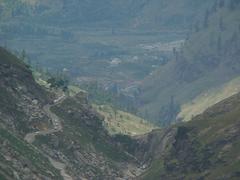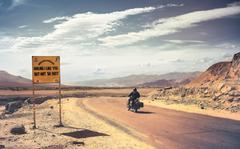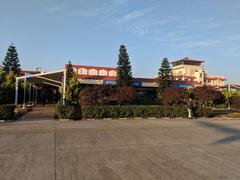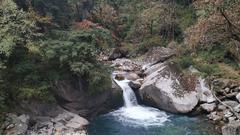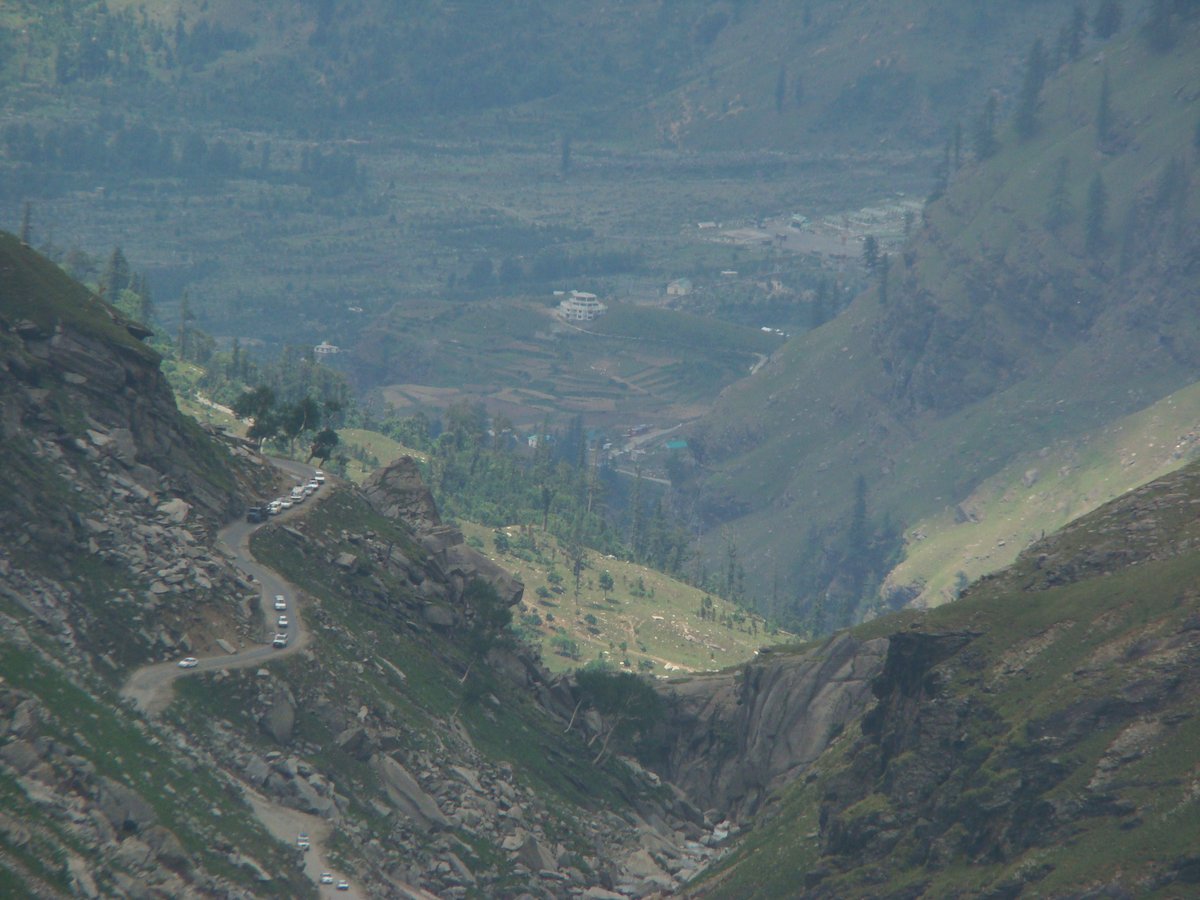
Leh–Manali Highway: Visiting Hours, Permits, and 2025 Travel Guide
Date: 14/06/2025
Introduction to the Leh–Manali Highway and Its Significance
The Leh–Manali Highway is a legendary mountain route that epitomizes adventure, natural beauty, and cultural richness in the Indian Himalayas. Spanning approximately 427 to 490 kilometers, this highway links Manali in Himachal Pradesh to Leh, the capital of Ladakh. More than just a road, it serves as a critical lifeline for the region, with historical roots in post-1962 strategic needs, connecting remote Himalayan communities and facilitating military logistics. The journey offers spectacular vistas of rugged landscapes, high-altitude passes like Rohtang La, Baralacha La, and Tanglang La (5,328 meters), breathtaking lakes such as Suraj Tal, and heritage sites, including monasteries and palaces that showcase Ladakh’s diverse culture (Leh–Manali Highway: History, Travel Guide, and Adventure Tips for Ladakh’s Iconic Route, Leh Manali Highway Travel Guide 2025).
Travelers must understand the highway’s seasonal accessibility, necessary permits, and safety precautions. The highway is generally open from early June to October, requiring permits such as the Inner Line Permit (ILP) for Indian citizens and the Protected Area Permit (PAP) for foreign nationals in protected areas. Modern infrastructure, including the Atal Tunnel at Rohtang and the upcoming Shinku La Tunnel, is transforming this route into a safer, more accessible year-round corridor (Complete Safety Guide and Travel Tips for Leh–Manali Highway 2025).
This guide offers detailed insights into the route’s history, geography, cultural significance, practical travel advice, and safety considerations—empowering you for a rewarding journey. Whether you crave the thrill of high passes, the peace of ancient monasteries, or the serene beauty of the Himalayas, the Leh–Manali Highway promises an unforgettable adventure. For real-time updates and personalized assistance, consider using the Audiala app.
Table of Contents
- Introduction
- Historical Development
- Strategic and Economic Significance
- Engineering Feats and Modernization
- Seasonal Accessibility and Visitor Information
- Cultural and Social Impact
- Tourism and Adventure Significance
- Key Route Segments and Mountain Passes
- Historical and Cultural Sites
- Notable Route Features
- Practical Travel Tips
- Emergency Preparedness and Connectivity
- Responsible Travel and Environmental Safety
- Ongoing Developments and Future Prospects
- Frequently Asked Questions (FAQ)
- Visual Resources
- Conclusion
Historical Development of the Leh–Manali Highway
The highway’s construction began in response to India’s strategic needs post the 1962 Indo-China war, aiming to provide reliable year-round access to Ladakh. The Border Roads Organisation (BRO), established in 1960, led this challenging project, overcoming extreme altitudes, unpredictable weather, and rugged terrain. By the late 1970s and 1980s, the highway was completed in stages, opening Ladakh to both civilian and military traffic.
Strategic and Economic Significance
Beyond its scenic appeal, the Leh–Manali Highway is vital for military logistics and regional security, serving as an alternative to the Srinagar–Leh Highway. Economically, it bolsters local communities by facilitating trade and tourism, with the annual reopening after winter closures signaling a revival of business for residents, hotels, and adventure operators.
Engineering Feats and Modernization
The highway traverses some of the world’s highest motorable passes: Rohtang La (3,978 m), Baralacha La (4,890 m), Lachulung La (5,059 m), and Tanglang La (5,328 m). Snow clearance and avalanche control remain constant challenges. The Atal Tunnel (9.02 km, inaugurated in 2020) bypasses the hazardous Rohtang Pass, reducing travel time and improving safety. The forthcoming Shinku La Tunnel, expected by 2025, will further enhance all-weather connectivity.
Seasonal Accessibility and Visitor Information
Highway Opening and Visiting Hours
- Open Season: Early June to October (subject to snow clearance and weather)
- Daily Travel Hours: 6 AM to 6 PM (daylight travel is strongly recommended; night travel is unsafe due to poor visibility and unpredictable weather)
Permits and Vehicle Regulations
- Rohtang Pass Permit: Required for all vehicles crossing Rohtang Pass; available online and at Manali offices.
- Inner Line Permit (ILP): Required for Indian nationals for certain restricted areas in Ladakh.
- Protected Area Permit (PAP): Mandatory for foreign tourists in protected areas.
- Vehicle Documentation: Carry valid registration and documents. Rental vehicles often provide experienced guides.
Safety Tips and Acclimatization
- Acclimatize properly to prevent altitude sickness—spend at least one night at Keylong or Jispa before ascending.
- Carry warm, layered clothing and check weather/road status daily.
- Travel with an experienced guide if possible, especially for first-time visitors.
Cultural and Social Impact
The highway connects a mosaic of cultures—Hindu, Buddhist, and indigenous communities—offering travelers immersive experiences through traditional villages, monasteries, and vibrant local markets. While tourism has brought economic opportunities, it also necessitates responsible travel to preserve local cultures and the fragile environment.
Tourism and Adventure Significance
The Leh–Manali Highway is a magnet for adventure seekers, offering dramatic landscapes, sparkling lakes (Suraj Tal, Deepak Tal), and access to the Lahaul, Spiti, and Zanskar valleys. High passes, challenging terrain, and remote locations demand careful preparation but reward travelers with unforgettable sights and unique cultural encounters.
Key Route Segments and Mountain Passes
| Segment | Distance (km) | Altitude (m) | Notable Features |
|---|---|---|---|
| Manali – Rohtang Pass | 51 | 3,978 | Snowfields, waterfalls, permits required |
| Rohtang – Keylong | 70 | 3,080 | Last fuel station at Tandi, Lahaul valley |
| Keylong – Jispa | 22 | 3,200 | Riverside camps, monasteries |
| Jispa – Sarchu | 85 | 4,290 | Baralacha La Pass, Suraj Tal lake |
| Sarchu – Pang | 80 | 4,600 | Gata Loops, Nakee La, Lachulung La |
| Pang – Tanglang La | 55 | 5,328 | More Plains plateau |
| Tanglang La – Leh | 115 | 3,500 | Indus Valley descent, Leh city |
Rohtang Pass
The gateway to Ladakh, renowned for its snowfields and panoramic views. Requires a permit and is prone to traffic jams during peak season.
Baralacha La
A challenging high pass near Suraj Tal lake. Sudden snow and challenging conditions are common.
Nakee La and Gata Loops
Nakee La is reached via the famous Gata Loops—21 sharp bends that provide dramatic mountain vistas.
Lachulung La
Known for stark landscapes and rock formations, offering a unique high-altitude driving experience.
Tanglang La
The highest pass on this route and the second-highest motorable pass in India. It offers spectacular views and marks the gateway to the Indus Valley.
Notable Route Features
Gata Loops
A series of 21 steep hairpin bends, a highlight for drivers and bikers.
More Plains
A vast plateau at around 4,800 meters, offering surreal, lunar-like landscapes.
Historical and Cultural Sites
- Keylong Monastery: A serene Buddhist monastery near Keylong.
- Leh Palace and Shanti Stupa: Historic landmarks in Leh reflecting local heritage.
- Hemis and Thiksey Monasteries: Major centers of Buddhist culture near Leh.
Practical Travel Tips
- Acclimatization: Essential for high-altitude travel; spend a day in Manali or Keylong.
- Fuel: Last reliable fuel station at Tandi. Carry extra fuel for the journey.
- Supplies: Stock up on food, water, and snacks as amenities are limited beyond Keylong.
- Vehicle Preparation: Ensure your vehicle is well-serviced; 4x4s or bikes in good condition are best.
- Accommodation: Book guesthouses or tent camps at Keylong, Jispa, Sarchu, and Pang in advance during peak season.
- Weather: Pack for variable conditions—sun, rain, snow, and cold nights.
Emergency Preparedness and Connectivity
- Mobile Coverage: Limited beyond Keylong. BSNL and Jio are most reliable.
- Medical Aid: Basic facilities at army camps; nearest hospitals in Manali or Leh.
- First Aid: Carry a comprehensive kit, AMS medication, and inform someone of your itinerary.
Responsible Travel and Environmental Safety
Preserve the fragile Himalayan ecosystem by carrying out all waste, avoiding off-road driving, and respecting local customs. Minimize water usage and disturbance to wildlife (thelandofwanderlust.com).
Ongoing Developments and Future Prospects
Infrastructure projects, especially the Shinku La Tunnel, aim to ensure all-weather connectivity and safer travel, benefiting military operations, local communities, and tourism.
Frequently Asked Questions (FAQ)
Q: When is the Leh–Manali Highway open?
A: Usually from early June to October, depending on weather. Always check current conditions before traveling.
Q: Are permits required?
A: Yes, ILP for Indian nationals and PAP for foreigners are required for protected areas. Rohtang Pass also requires a separate permit.
Q: What is the best vehicle for the journey?
A: A high-clearance 4x4 or a well-maintained motorcycle is ideal.
Q: Where can I find accommodation along the route?
A: Basic guesthouses and tent camps at Keylong, Jispa, Sarchu, and Pang.
Q: Is night travel safe?
A: Night travel is not recommended due to unpredictable weather and poor visibility.
Visual Resources
Image suggestions:
- Rohtang Pass snowfields: “Snow-covered Rohtang Pass on Leh–Manali Highway”
- Baralacha La with Suraj Tal: “Baralacha La pass with Suraj Tal lake”
- Gata Loops: “Winding Gata Loops hairpin bends”
- More Plains: “Vast More Plains plateau between Pang and Tanglang La”
Interactive maps and virtual tours are recommended for enhanced planning.
Visiting Tanglang La Pass: Gateway to Leh Ladakh
Overview
Tanglang La, at 5,328 meters, is a highlight of the Leh–Manali Highway and a gateway to Ladakh. It has deep historical significance as part of ancient trade routes and offers panoramic Himalayan views.
Best Time and Permits
Accessible from June to September; closed due to snow from November to May. No ticket required, but ILP or PAP is mandatory for entry into Ladakh (Visiting the Tanglang La Pass).
Health and Safety
Acclimatization is crucial. Spend a night at intermediate altitudes (Keylong, Jispa), stay hydrated, and limit exertion. Carry a first-aid kit and consider portable oxygen if susceptible to altitude sickness.
Nearby Attractions
- Keylong: Monasteries and local culture.
- Sarchu: Tented camps and scenic vistas.
- Leh: Palaces, monasteries, and vibrant markets.
Summary and Final Tips for Visiting the Leh–Manali Highway
The Leh–Manali Highway showcases the Himalayas’ grandeur, rich culture, and human ingenuity. Planning is essential—secure permits (ILP/PAP), acclimatize, prepare your vehicle, and respect local customs and the environment. The route’s iconic passes, historic sites, and dramatic landscapes are now more accessible, thanks to continuous infrastructure improvements. Responsible travel ensures that this adventure remains rewarding for years to come (Leh Manali Highway Travel Guide 2025, Visiting the Tanglang La Pass).
For live updates, detailed guides, and itineraries, download the Audiala app and follow us for the latest news and travel inspiration.
References and Further Reading
- Leh Manali Highway Travel Guide 2025: Key Passes, Permits & Essential Tips
- Visiting the Tanglang La Pass: Gateway to Leh Ladakh - History, Travel Tips & Visitor Information
Safe travels and embrace the spirit of adventure that the Leh–Manali Highway offers!
